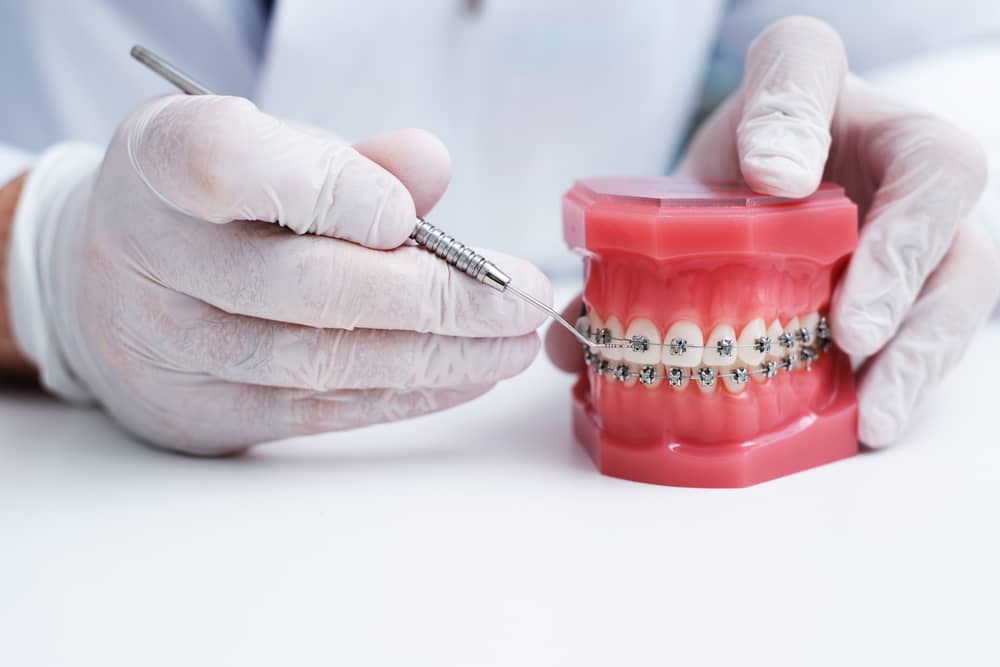The Best Guide To Johnson Orthodontics
Table of ContentsJohnson Orthodontics Things To Know Before You Get ThisJohnson Orthodontics Fundamentals ExplainedThe Basic Principles Of Johnson Orthodontics Indicators on Johnson Orthodontics You Should KnowJohnson Orthodontics Fundamentals Explained6 Simple Techniques For Johnson OrthodonticsThe Greatest Guide To Johnson Orthodontics
An orthodontist is a dental practitioner educated to identify, avoid, and treat teeth and jaw abnormalities. They fix existing problems and are trained to identify problems that may develop in the future. Orthodontists collaborate with people of all ages, from youngsters to grownups. Individuals usually connect an excellent smile with health., but not all dentists are orthodontists. They focus on 2 areas: Just how to effectively and securely move teeth How to appropriately lead growth in the teeth, jaw, and faceOnce an orthodontist has finished training, they have the choice to become board licensed.
Johnson Orthodontics Fundamentals Explained
Malocclusion leads to tooth congestion, a twisted jaw, or irregular bite patterns. Malocclusion is generally treated with: Your orthodontist attaches steel, ceramic, or plastic square bonds to your teeth.
If you have only minor malocclusion, you might have the ability to make use of clear dental braces, called aligners, rather than traditional braces. Some people need a headwear to help move teeth right into line with pressure from outside the mouth. After dental braces or aligners, you'll require to put on a retainer. A retainer is a custom-made gadget that maintains your teeth in position.

They're frequently utilized on children. They can produce extra space in the mouth without needing to draw teeth. If you have a significant underbite or overbite, you may need orthognathic surgical procedure (likewise called orthodontic surgical treatment) to lengthen or shorten your jaw. Orthodontists utilize wires, medical screws, or plates to sustain your jaw bone.
Unknown Facts About Johnson Orthodontics
Throughout your very first orthodontic examination, you'll likely have: An oral examPhotos taken of your face and smileDental X-raysPanoramic (360 degree) X-rays of your face and headImpressions to develop molds of your teethThese examinations will assist your orthodontist understand just how to proceed with your therapy. An orthodontist is a dental practitioner that's had training to treat your teeth and jaw.
An orthodontist is concentrated on your bite, so something like a cracked tooth would certainly be dealt with by a dental expert. Orthodontists are concentrated on your bite, or the way your teeth fit with each other, and the straightness of your teeth.
Ever before questioned just how celebrities always appear to have perfectly straightened teeth? The solution usually hinges on the skilled hands of an orthodontist. But exactly what does an orthodontist do? Orthodontists are dental professionals who concentrate on fixing irregularities in the teeth and jaws. Their proficiency exceeds just creating an attractive smile; it YOURURL.com includes improving your overall oral wellness and feature.
How Johnson Orthodontics can Save You Time, Stress, and Money.

Clear aligners, like Invisalign, are a preferred alternative for patients looking for an extra discreet treatment alternative. These removable trays are customized to gradually move the teeth's setting (https://issuu.com/johnsonortho). Headwear may be used combined with braces or aligners to use additional targeted pressures, especially for fixing jaw inconsistencies. In cases of narrow jaws, palatal expanders can be utilized to produce space for appropriate tooth placement.
An Unbiased View of Johnson Orthodontics
While accomplishing an attractive smile is a natural perk of orthodontic treatment, the benefits extend far beyond visual appeals. Correctly aligned teeth and a balanced bite add to boosted dental health and wellness in a number of methods: Straight teeth are much easier to clean, which assists stop dental caries and gum condition. An appropriate bite permits for effective chewing, which assists in food digestion and general gut health and wellness.
What is the difference in between a dentist and an orthodontist? To respond to a question that is usually asked, both dental experts and orthodontists aid clients get much better oral health, albeit in different methods. It helps to bear in mind that dentistry is an instead broad scientific research with various medical specializations. All dental experts, consisting of orthodontists, deal with the teeth, periodontals, jaw and nerves.
Orthodontists and dental practitioners both offer oral take care of individuals. Orthodontists can operate in an oral office and provide the same treatments as other dental professionals. So you can think about both physicians who treat gum tissue and teeth problems. The major difference is that becoming an orthodontist requires a specific specialized in treating the imbalance of the teeth and jaw.
Johnson Orthodontics Can Be Fun For Anyone
An orthodontist is a dental professional that has undertaken training to specialize in the medical diagnosis, prevention and treatment of irregularities in the jaw and teeth. Their training consists of dealing with these existing conditions (mentor orthodontics). They can additionally recognize potential issues in teeth positioning that might establish when problems are left neglected. Orthodontists can aid individuals of all ages.
This consists of all the necessary education to become a general dentist. According to the American Student Dental Organization (ASDA), it means you will certainly need to have either a Doctor of Medication in Dentistry (DMD) or a Medical Professional of Oral Surgical Treatment (DDS). In other words, orthodontists need to complete oral school and then acquire an orthodontics specialty education.
Get This Report about Johnson Orthodontics

Other than the orthodontist, we commonly see aides functioning with these dental professionals in their clinics. What is an orthodontist aide called?